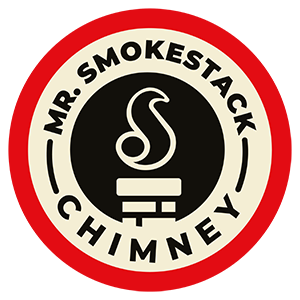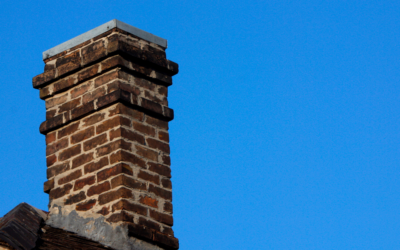Did you know that the Chimney Safety Institute of America (CSIA) has deemed water as your chimney’s number one enemy? That’s because, once it infiltrates, it causes all kinds of trouble, both short-term and long-term, making your system run less safely and efficiently over time.
Needless to say, doing everything possible to avoid leaks and water-related damage is imperative. And with spring just around the corner, it’s important to ensure your chimney is prepared for some potentially heavy rains that may be arriving soon.
Signs of a Leaky Chimney
The chimney system is a large one, with a major portion of it being hidden from sight, so it’s easy for many leaks to go unnoticed. This means they they can continue wreaking havoc for quite some time before damages become apparent. Unfortunately, by then, you’ll be facing some big and expensive repair jobs.
In order to prevent these types of problems, knowing what to watch out for is a must! That’s why we recommend the following actions…
- Listen – Sounds of water dripping inside the chimney indicates a hidden leak. The dripping may be muffled, as if landing on masonry, or it could be dripping onto a puddle on the smoke shelf. Either way, the water may not show visible signs of damage for some time, which is why any dripping noises should be looked into right away!
 Look – Stains in the firebox that appear green or black are usually caused by water and mold. You may also stains on the exterior of your chimney, such as red rust stains, white effloresce stains, or even green stains from vegetation growth. Be sure to keep a vigilant eye out for any rusting, cracking, or missing components throughout your structure.
Look – Stains in the firebox that appear green or black are usually caused by water and mold. You may also stains on the exterior of your chimney, such as red rust stains, white effloresce stains, or even green stains from vegetation growth. Be sure to keep a vigilant eye out for any rusting, cracking, or missing components throughout your structure.- Smell – It may seem strange that you can smell a leak, but it’s definitely possible! Odors that smell like mildew or dirty laundry occur when a chimney leak has persisted for some time. Other times you might notice the foul odors (similar to a burnt barbecue) that occur when water mixes with creosote and buildup within your flue.
Water Damage & Your Chimney
What exactly can water do to your chimney if left unchecked? We’ve got the lowdown on the most common types of damage below.
- Damaged Masonry: When water is allowed into any minor cracks in the masonry, it can quickly trigger major problems. Not only will deterioration occur, but your bricks will likely face the freeze/thaw process, too. This is when freezing temps cause the water to freeze, expand, and create even further cracking. Then, when temps warm up again, the water melts and moves further into the damaged masonry. Every time temps drop, this cycle will repeat itself causing a lot of damage in just one season.
- Rusted Parts: Any part of your chimney or fireplace that is made of metal can rust if not installed right or adequately protected. A rusted throat damper, for instance, may become stuck in an open or closed position, or your flashing or chimney cap could also become compromised, leaving your system vulnerable. Your door hinges and firebox may even take on rust, which both weakens the parts and becomes a bit of an eyesore.
- Unpleasant Odors: It’s a simple fact – wet chimneys stink. When creosote mixes with water it creates an unpleasant and musty barbecue smell. This isn’t an odor anyone wants wafting throughout their household!
 Damaged Walls, Floors & Ceilings: Chimney leaks are known for spreading and ruining walls, ceilings, and even floors. Before you know it, you’ll be spotting unsightly stains near your fireplace. Leaks have even been known to eventually work themselves to a completely different rooms! In these cases, a general contractor may be the person you’d think to call, but this isn’t the right action to take. While these techs can likely repair the damage, only a chimney expert can stop the leak from causing further issues.
Damaged Walls, Floors & Ceilings: Chimney leaks are known for spreading and ruining walls, ceilings, and even floors. Before you know it, you’ll be spotting unsightly stains near your fireplace. Leaks have even been known to eventually work themselves to a completely different rooms! In these cases, a general contractor may be the person you’d think to call, but this isn’t the right action to take. While these techs can likely repair the damage, only a chimney expert can stop the leak from causing further issues.- Mold/Mildew Buildup: A dark, damp chimney is the perfect environment for mold and mildew to grow. Not only do these substances harm your chimney, but they can also spread to the rest of your home and affect your indoor air quality. This can be dangerous for those living in the home, especially for those with respiratory issues. Mold can grow in as little as one to two days, so if you notice any signs of it in your chimney’s structure you should can in a professional right away.
- Rotting Adjacent Woodwork: We mentioned stains on your walls and damaged carpet, but as leaks spread, your woodwork will eventually suffer, too. Any adjacent woodwork that’s exposed to water can eventually start to rot, leaving you with a lot of costly and time-consuming repairs to address down the line.
- Clogs in the Flue: As a fireplace owner, you know how imperative good draft and airflow is when operating your fireplace. Water is known for causing clogs to form in the flue, especially if you already have debris building up inside of it. Avoid smoke backing into your home, inefficiency, and carbon monoxide exposure by implementing appropriate preventative maintenance early on.
In the end, when you leave a leaky chimney unattended and neglect necessary repairs, the leak will only worsen, triggering all kinds of expensive and hard-to-address damage. All of the problems above can be avoided by simply investing in the care your system deserve from the get-go.
And remember… if you have a leak in another part of the house don’t automatically assume your chimney isn’t the culprit! Water can easily travel across the house through the ceiling and walls, and it often won’t make a visible leak until it reaches the lowest area or the weakest material. This means a chimney leak can cause damage rooms that are well away from the actual chimney.
Leak Prevention
So, now you know what kind of damage a leak can cause and even how you can possibly spot one… but is there any way to ensure they simply never occur in the first place?
Well, one surefire way to ensure your chimney is always protected is by scheduling annual chimney inspections! A routine inspection completed before the start of your burning season will allow your sweep the opportunity to catch any problem in their early stage, well before they lead to more serious damage.
Here at Mr. Smokestack, we have lots of ways to address and prevent leaks. If we come across any issues in your system, we’ll likely recommend one of the following leak repair services:
- Chase cover repair and/or replacement
- Cap installation and/or replacement
- Crown repairs and/or a rebuild
- Flashing repair and/or installation
- Mortar replacement and masonry repairs
- Waterproofing services
Reach Out to Our Experts
Over time, and many seasons of burning, even the best chimneys can experience damage, and it’s important to recognize and address it promptly.
Fortunately, the professionals at Mr. Smokestack can help with it all. We’re CSIA-certified, value education, and we’re highly experienced in the field. We’ll detect your damage, find the cause, then suggest the best repairs for moving forward, guaranteeing safer and more efficient burning season for years to come.
Ready to get started? Reach out today!


